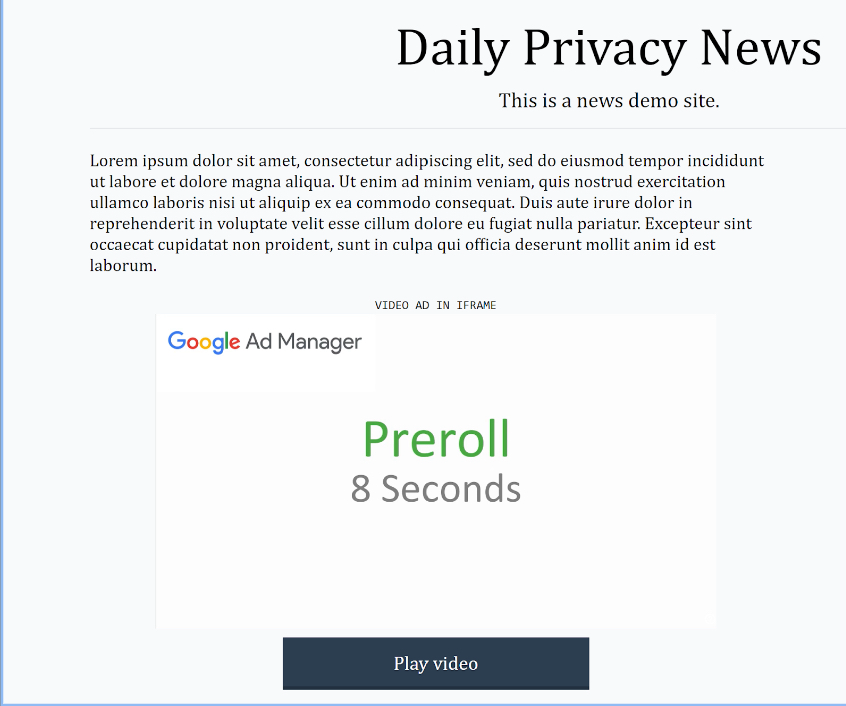
There is a major technical issue between VAST and PAAPI from the Privacy Sandbox. It’s something that was called out by the IAB Tech Lab in a recent report. While Google claims that PAAPI supports VAST, that can’t happen without a lot of work — if at all.
Today we’re talking Video and Google’s PAAPI, so bear with me it’s going to get technical.
We’ll do our best to untangle the web of acronyms and give you a better understanding of the current situation as these two have been trading blows over the past month.
VAST & PAAPI Overview, Why It’s Not Going to Work Right Now
In one corner we have VAST, short for Video Ad Serving Template, this is the industry standard that video players use to serve ads. It’s an XML schema launched by the IAB in 2008 that has standardized the industry’s approach to video.
In the other we have Google’s Protected Audiences API, or PAAPI for short, a major piece of Google’s Privacy Sandbox alongside their Topics & Attribution APIs. PAAPI is Google’s solution to phasing out the 3PC in Q3 2024 and still help publishers monetize their Chrome audience.
You all know about the back and forth this past month that started with the extensive report the IAB Tech Lab released criticizing Google’s Privacy Sandbox. Though in all the summaries and hot-takes, video still hasn’t been getting enough attention and it’s an area that needs the most work ahead of the Q3 deadline.
In short, it’s a mess. The proposed changes to video creative delivery and rendering require big changes across the ad ecosystem and if something isn’t done it will heavily impact publisher fill rates and revenue.
Video fallbacks are especially an area to key in on, as fallbacks are how publishers ensure an ad serves to improve fill-rates and ultimately revenue. If you know anything about VAST is that it throws errors plenty of times, you need to have fallbacks in place to account for that.
The PAAPI integration all hinges on this flow of “postmessage sequencing” that bounces between the Sandbox’s iframe and parent frame of the user’s browser. The issue with the current proposal is that it only allows for one fallback if at all. Where a publisher would typically load 3-4 VAST XML files to fill that ad slot.
This is a demo of how a video ad would serve in a Privacy Sandbox environment.

It’s not all doom and gloom, but the time is running out.
Many common scenarios with VAST including playbacks haven’t been considered and from what we see in the GitHub discussion boards they’re being actively worked on right now.
What Does Work?
Video ads without content seem to be the direction publishers are moving with their testing so far. That’s the only scenario the IAB says is currently supported by the Privacy Sandbox. This allows an auto-playing, muted, audience targeted video ad to run via HTML and then close when finished.
It’s a limited use case for publishers to be testing, but valuable nonetheless to understand how monetization will look when the clock strikes midnight on the 3PC in Q3 of 2024.
What About Fenced Frames?
A new even more privacy-oriented replacement for the (inline frames) discussed above are Fenced Frames. Which will further restrict data from moving across domains, essentially preventing cross-site tracking.
But don’t worry about that yet, the new Fenced Frames requirement of the Privacy Sandbox has been pushed until 2026. We’ll all be talking about that soon enough…
What Do Publishers Do?
Publishers should be working with their Ad Tech partners to build up their testing capabilities with the Privacy Sandbox. The heavy-lifting is primarily going to be on the SSPs & Google to update their specs to accommodate this new bidding mechanism & environment.
VAST and the way video conventions like fallbacks work are deeply ingrained into existing video adtech. Google needs to ensure proper support for existing technologies and conventions or the VAST majority of video implementations are going to break or be severely hamstrung.
Even Google Ad Manager itself bases its video off of Google’s IMA library which is a VAST rendering library and a requirement of AdX. I’m confident they won’t be shutting off instream AdX revenue over this.
Though from my past decade on the sell-side, I don’t see publishers, ad servers and SSPs making huge overhauls to how they serve video ads. There’s going to be a tech compromise over the next couple months to help VAST function with PAAPI and keep the advertising dollars flowing through to publishers.